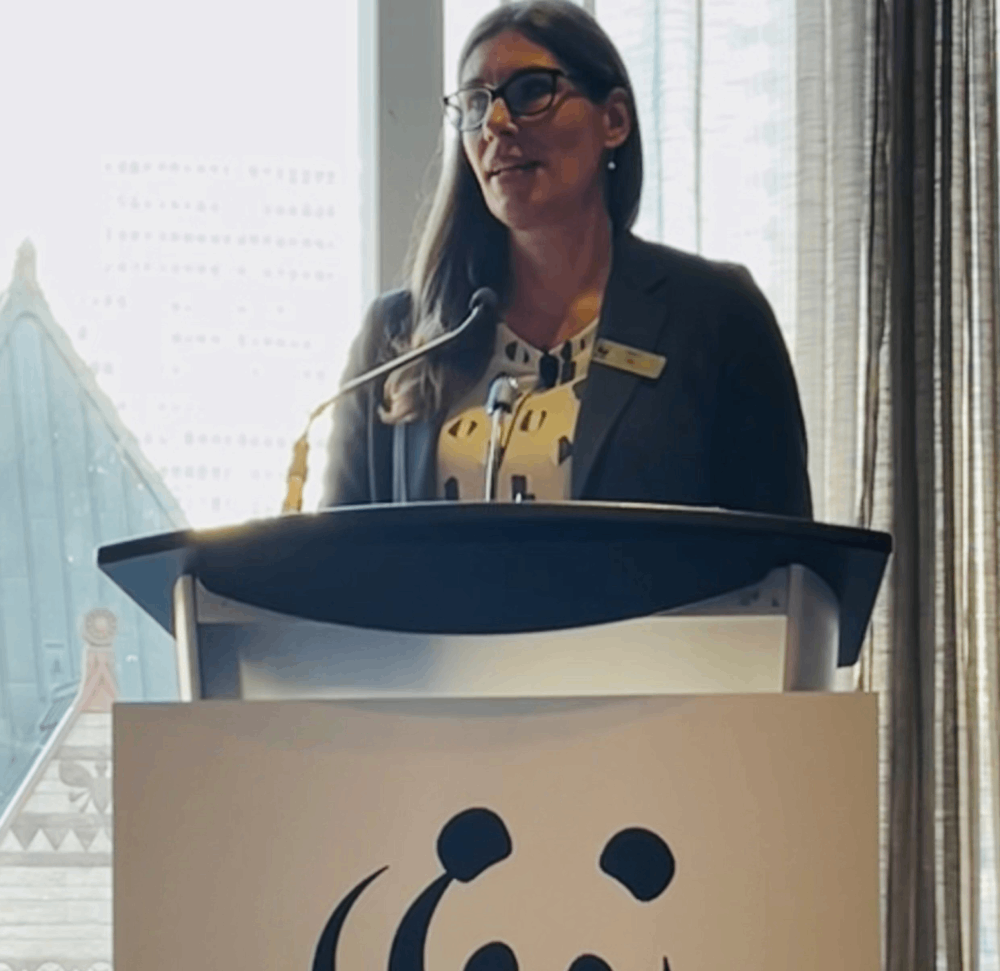How businesses can lead in the battle against biodiversity loss
What role does the business community play in addressing the growing biodiversity crisis? It’s a question being asked more and more in boardrooms across Canada, as companies come to grips with how much they affect — as well as rely on — nature.
Now there’s help. Earlier this month, WWF-Canada and Aviva Canada launched Business and Biodiversity: Your Company’s Path Towards Nature Positivity, a new action plan for corporate Canada.
We sat down with Kathrin Majic, WWF-Canada’s Senior VP of Development, to discuss how businesses can use it, and why it matters.

What exactly is this action plan?
In short, it’s a resource to help Canadian businesses across industries take action to combat biodiversity loss. It provides important context about why they need to do this, and it offers a set of practical and impactful steps they can take to accelerate their journey towards nature positivity. We’ve included things they can do inside their own operations and beyond, in the immediate term and in the future. We like to think of it as a sort of to-do list for companies that want to help halt and reverse biodiversity loss.
What was behind the decision to create this resource?
It grew out of our partnership with Aviva Canada, which has been supporting our work at WWF-Canada since 2021 — most notably by funding our Nature and Climate Grant Program. Early on, Aviva Canada made it clear that they don’t want to “own” biodiversity as a cause. In fact, they want to challenge all businesses — regardless of industry — to take urgent action.
You may have seen in December of 2022, on the eve of COP15 in Montreal, WWF-Canada CEO Megan Leslie and Aviva Canada’s former CEO Jason Storah wrote an op-ed in the Financial Post calling on all businesses to commit to protecting and regenerating nature.
The reaction to the op-ed was overwhelmingly positive, and caused us to reflect: What can we do to inspire more action? How can we pool our expertise to help other businesses drive change?
That sparked a series of events that brought us here today.
Why is this action plan needed now?
First, we know that our planet is facing a crisis of biodiversity loss. Monitored wildlife populations have declined by an average of nearly 70 per cent since 1970. Every second, Earth loses a hockey rink and a half’s worth of habitat. We’re losing crucial nature, and fast.
Second, we know that the biodiversity crisis has direct economic consequences. Half of global GDP is highly dependent on healthy ecosystems. Nature-related risks to companies now total more than $1.9 trillion. More and more, stakeholders expect companies to actively contribute to a healthy natural world.
Finally, we know that businesses need help. So much of the conversation on how businesses can help the environment centres on reducing carbon emissions, which is vitally important in taking on the climate crisis.
But biodiversity loss can be tougher to fit onto a ledger or into a strategic plan. It can be tricky to measure a company’s impacts and dependencies on the natural world. And it can be confusing to know how to take action to make things better.

How do you hope people will use it?
I hope people will read it, learn from it, and act on it. And I hope they’ll share it with their professional colleagues — especially those with the power to influence ESG (environmental, social, and governance) strategies. A company’s biodiversity plan shouldn’t be the job of one person or one team — the more stakeholders across all departments are involved, the more effective the change will be. For example, an employee responsible for procurement or supply chain could have a big influence on biodiversity via the sourcing decisions they make about products from ecologically sensitive areas.
What excites you the most about this action plan?
One thing that really stands out to me is that this isn’t just a list of chores. Yes, companies interested in transforming their biodiversity footprint should expect to have to do some work. But there’s also a great business case for them doing so. Acting now will cost them a lot less — half as much, by some estimates — than putting things off. It will make them more resilient and better prepared to adapt to changing disclosure and reporting standards.
And if we want to be very blunt about it, they’ll be likelier to reap competitive and reputational advantages from being ahead of the crowd. So that’s what stands out to me: prioritizing nature really is just good business.

